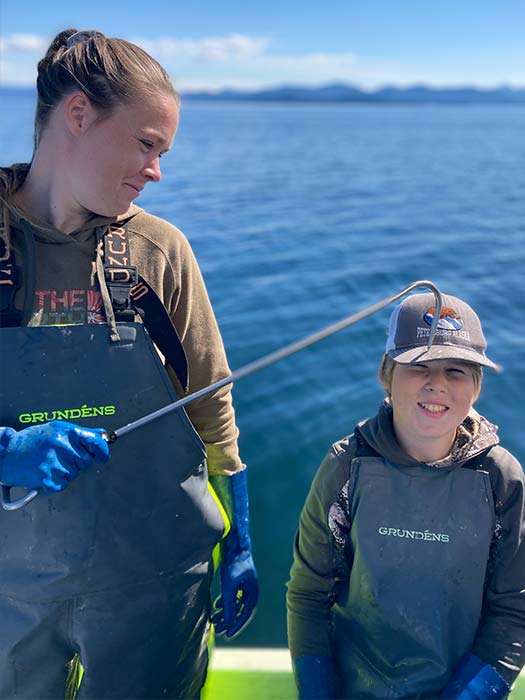Looking for the best fish from the North Pacific? You won’t find better than wild and sustainably-caught halibut.
There’s nothing like reeling in a giant halibut and the experience in Alaska is like nowhere else. Read on to learn everything you need to know about halibut fishing — from where we go to the tackle we use.
When is the best time for Alaskan halibut fishing?
The best time to go Alaska halibut fishing is from mid-May to mid-September. This is when the halibut are most active, and the weather is usually the most cooperative.
However, there are a few things to keep in mind if you’re planning a trip.
- First, the Gulf of Alaska is typically much colder than the Inside Passage, so be sure to pack accordingly.
- Secondly, halibut are bottom-dwellers, so you’ll need to use heavier tackle than you would for other fish.
- Lastly, halibut tend to be solitary creatures, so it’s best to fish in areas with fewer other anglers.
By following these tips, you can ensure that your Alaska halibut fishing trip is successful.
What does chalky halibut mean?
Since Alaska halibut fishing is best during the mid-May to mid-September season, halibut are particularly susceptible to becoming chalky during the off-season peaks.
Chalkiness is caused by a loss of muscle tissue due to a lack of food. Halibut caught during the off-season are often smaller because they haven’t had as much time to feed.
Catching chalky halibut isn’t hazardous and can still be eaten. However, it isn’t a good option for those who want to make the most of their Alaska halibut fishing trip. The best way to avoid catching chalky halibut is to fish during the peak season. Doing so will have a better chance of catching healthier, larger halibut.

What tackle is best when fishing for halibut?
Halibut fishing is a challenging but rewarding experience. Fishing for halibut is a popular sport in many parts of the world. The most common method is to use a circle hook baited with herring, fished on the bottom with a cannonball weight. This type of setup can be used in many different situations and is one of the most effective ways to catch halibut.
Another popular method is to fish with live bait. This can be done by using a small jig or lure to attract the halibut and then using live bait to entice them to bite.
These giant flatfish can weigh over 300 pounds, making them a real prize for any angler. Halibut are bottom-dwellers, so they can be difficult to hook. Once you’ve got a bite, you must be careful when reeling in your catch.
Halibut have strong teeth that can easily cut through the line. When halibut fishermen are ready to bring the catch onto the boat, we use a gaff to grab it behind the gills and above the gut cavity. By pulling in a continuous motion, we avoid damaging the fish.
How much meat can you get from halibut?
Halibut are prized for their white, flaky flesh, considered among one of the finest of all fish.
One of the most common questions about halibut is how much of the fish is edible. The answer to this question depends, but typically, a good fish filleter can get 50 – 60% of the weight of the fish.
In addition to the filets, the halibut cheeks are edible and considered a delicacy by many. Therefore, when considering how much of a halibut is edible, it’s essential to remember to remove the cheeks as well as to filet the fish.
Halibut fishing isn’t for the faint of heart – it takes patience, skill, and a lot of time. Halibut are large, bottom-dwelling fish and are not known for being particularly fast or agile. As a result, reeling one in can be quite a challenge; halibut fishermen often have to wait hours for a bite, and even when they hook one, the fight can last for quite some time.
Now that you have a better idea of halibut fishing, you might be reconsidering DIYing the catch. If you’re ready to leave it to the fishing pros, check out our selection of delicious and sustainably caught halibut.


